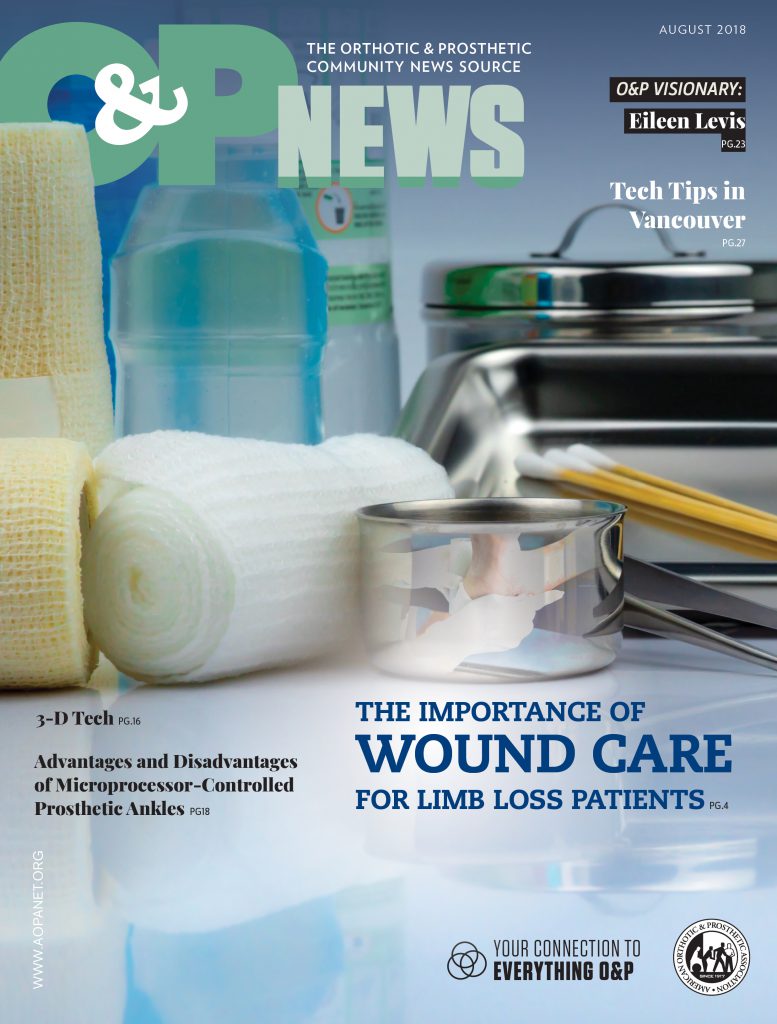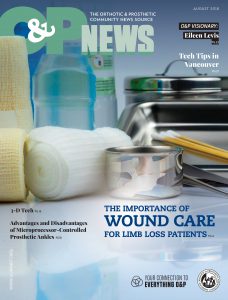3-D Tech
The latest innovations in 3-D printing will be explored at the AOPA National Assembly
Are you looking for an opportunity to learn the ins and outs of 3-D printing? Then you won’t want to miss the full-day program, “Getting Your Feet Wet With O&P 3-D Printing,” to be held in conjunction with the 2018 AOPA National Assembly. This program is geared specifically toward technicians and fabricating practitioners. This full day of sessions is designed to give participants the background needed to go from scan to printed device.
The day will start with the session, “How Can 3-D Printing Not Be Disruptive?” with Jeff Erenstone, CPO. Erenstone is founder and chief executive officer of Create O&P as well as the head clinician for Mountain Orthotic and Prosthetic Services. He has built a practice that specializes in custom and small production designs for adaptive athletes. In 2015, Create O&P started fabricating prosthetic components out of flexible 3-D-printed materials, and in 2016 expanded into selling complete systems for prosthetic practitioners to fabricate 3-D-printed devices in their offices. His presentation will provide a summary of adaptive manufacturing technologies and examples of how 3-D printing and CAD can be used in efficient workflows.
The second morning session, “Design of Upper-Limb Prostheses Using 3-D Printing and Scanning Technologies,” will be presented by Nikolai Dechev, PhD, an associate professor of mechanical engineering at the University of Victoria and director of the Biomedical Engineering Program, as well as executive director of the Victoria Hand Project, a nonprofit organization dedicated to providing hand prostheses to amputees in need in developing countries. This session will offer the design details, workflow information, and usage reports related to the Victoria Hand, a full-function 3-D-printed upper-limb prosthesis designed to be printed and fabricated on site within resource-poor countries. Dechev’s research program involves biomedical system design, with applications in advanced upper-limb prostheses and biosensors, which includes 3-D printing of affordable hand prostheses, implantable sensor design for acquisition of electromyographic biosignals, ultrasound imaging of wrist tendons for prosthesis control, and wireless power transfer technology for implantable sensors. These projects aim at developing better methods for the control of advanced upper-limb prostheses.
At mid-day, program participants will have a chance to visit the 100,000-square-foot Exhibit Hall and meet with 3-D printing manufacturers to touch, feel, and use their printers. Lunch will be provided to all full-conference participants between noon and 1:30 p.m.
The afternoon program will reconvene with the session, “Realistic Implementation of CAD and Adaptive Manufacturing Techniques for the Individual O&P Practitioner,” presented by Mike Nunnery, CPO. Nunnery will provide an overview of the misconceptions, pitfalls, and misunderstanding of a practitioner’s experience, as well as an explanation regarding how digital scanning and adaptive manufacturing can be utilized in a small O&P practice to provide unique devices for individuals unable to obtain them from conventional design and fabrication techniques. Nunnery, who is owner of a small O&P facility in Rhode Island, has been involved in numerous research projects with the University of Rhode Island and Providence U.S. Department of Veterans Affairs Medical Center as well as other private entities. He has been an advocate for the use of 3-D CAD tools and technologies in O&P for more than 15 years. He also is a builder-in-residence at the AutoDesk Tech Center in Boston, working with the Hand Made Build Team seeking to design unique and innovative prosthetic devices using all forms of digital design and fabrication techniques.
The afternoon will continue with a “Scanning and CAD Software Roundtable,” where participants will hear from representatives from O&P CAD and scanning software companies on a wide range of topics. Confirmed participants will represent technology from the following companies: Create O&P, Standard Cyborg, WillowWood, Vorum, Techmed, Provel, Rodin 4D, BioSculptor, and Prosfit.
Additional Friday afternoon programming will include the session, “The Effect of Material Choice and Process Parameters on the Mechanical Strength of 3-D-Printed Transtibial Prosthetics,” by Shadi Sabeti. This research presents the results from a pilot study in which seven 3-D-printed sockets, using a range of materials and printing methods, were tested for static strength using ISO 10328. Initial results showed that some materials and print methods met the standard while others did not.
The day will conclude with a panel discussion titled, “Where the Virtual Rubber Meets the Real Road: A Basic Understanding of CAM Software and Running a 3-D Printer.” The discussion will include a hands-on demonstration on how to 3-D print a positive model. Panel participants include Steve Hill CO, BOCO; Jeff Erenstone CPO; and Mike Nunnery, CPO.
For more information on the technical program track to be presented in conjunction with the 2018 AOPA National Assembly, visit www.AOPAAssembly.org or contact AOPA Headquarters at [email protected].



